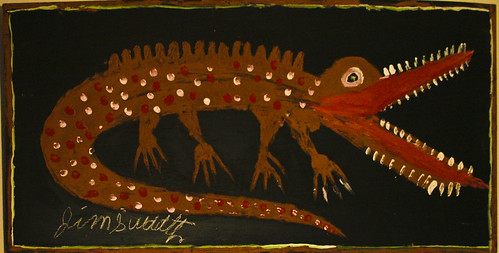
The art of Northern Wisconsin resonates vernacular in its purest sense. There are a myriad of local shops that are packed with representations of wildlife and mystical forest creatures. On a recent camping trip to Minocqua, WI I drove through some of these towns and villages and experienced their native tongue.
The first and second images are of the Paul Bunyan Cook Shanty in Minocqua. It was styled after the cook shanties that were common in the early days of logging camps. We ate from metal plates, and drank from metal cups. The servers brought endless plates of breakfast food to our tables. We dined on flapjacks, eggs, and assorted meat until we could dine no more. A lumberjack can't chop down trees on a bowl of cold cereal.

In the restaurants gift shop were cabinets filled with locally crafted items and trinkets. Living in Wisconsin my entire life, I've almost become numb to this kind of stuff. It would seem that every other home I've been in around here has at least one deer head or fish mounted on the wall. Seeing it here in a massive spotlit display case gave the work new context. Somebody makes this stuff, and then sells it to the shops. What began as a simple tributary reproduction of the artists environment, has now become a tourist attraction. These works have become just as necessary to the North woods as the pine trees.

This is a photograph of Rhinelander's local hero and menace to lumberjacks of the North Woods. The infamous Hodag has become the trademark of the entire city. Schools named their athletic teams "The Hodags," and every other shop in town is called Hodag Auto or Hodag Laundry. The creature which began as a prank in the late 1800's was instrumental in situating Rhinelander as the Industrial leader in Northern Wisconsin. Tourists came from far and wide to see the infamous Hodag, and returned home to tell others of the areas natural beauty.
Below is an image of the original object and photograph created by Eugene Shepard, a notorious prankster in the area. Its hairy body is made of wood and ox hide, and the horns from a bull. The claws were made from bent steel rods.

A very interesting history of the creature and the events around it can be found here: http://www.hodagpress.com/about.htm









